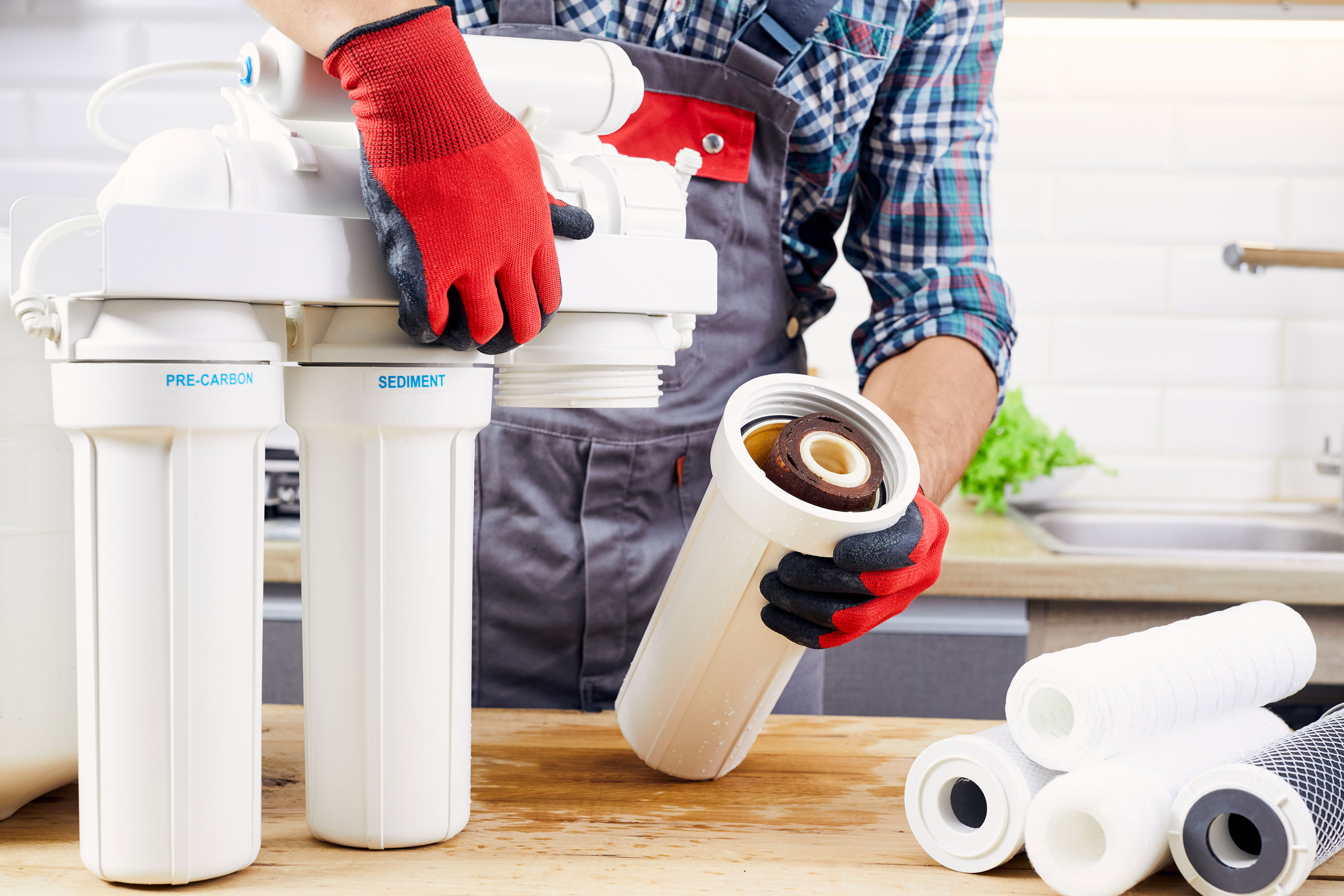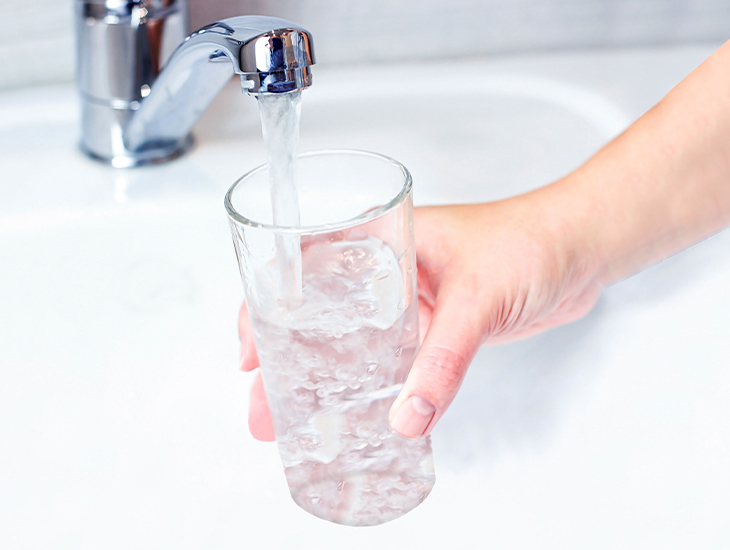NOT ALL FILTRATION DEVICES OPERATE THE SAME WAY NOR PROVIDE THE SAME TYPE OF ENHANCEMENT
For a large portion of the population in the United States, drinking water is an easy choice, not a thought really; they simply grab a glass, gather the refreshing liquid straight from the tap and call it a day. While we must credit municipalities that work tirelessly to treat water for distribution to make it acceptable and free from contaminants above allowable levels, there are needs that go beyond what a municipality can do. To start, some communities do not have central treatment plants to service their water and must rely on personal wells. In other instances, due to personal health or preference reasons, individuals may wish to have their water treated beyond what is provided from their source.
As mentioned, a vast majority of people find the municipal water source to be sufficient for their needs. However, there are plenty of reasons for which someone may choose to treat this water. Generally speaking, people tend to treat water from one of two categories of reasons — aesthetics and health. Many of us remember playing tirelessly in the summer heat only to be greeted by a well we vigorously pumped to get the much-needed outpour of water. But wait! It stunk – horribly. None-the- less, we lapped up the water quickly before the flow stopped. We did so because that stench was the result of an aesthetic effect (likely hydrogen sulfide) that would not harm our bodies. We did not like the smell, but our insatiable thirst was far more important than the odor. There are multiple other chemicals that fall into this category, such as chlorine, harmless particles, and iron. While we may not prefer the taste, odor or look of the water, consuming it will not cause harm to us in any way.
The second category, health affects chemicals, are a different story. People who may be immunocompromised should be cautious about ingesting water that has even allowable levels of heavy metal contaminants even though per the U.S, EPA they are there only at safe levels. Another example is a pregnant mother who may wish to remove certain chemicals that are harmful to a baby’s development, such as lead and nitrates. In these cases, additional treatment of the water becomes critical because heavy metals (including lead) and nitrates (among other harmful chemicals) have effects that could leave people extremely sick.
Once someone decides they would like to further filter their water, the number of products available from which to choose is astronomical. To start, it is important to first understand exactly what you are trying to remove from the water. For the aesthetic claims, it is relatively easy to determine what they are because an individual is either seeing, smelling or tasting something off-putting in relation to the water. However, for the health claims, they are typically not detectable without analysis. These chemicals go unnoticed because there is no smell or odor to warn you of their existence. To obtain the information needed to make informed choices, in the United States consumer confidence reports are available that will provide details, including what contaminants are found in the water. For those not on a municipal supply, it would be beneficial to test the water source to establish what is in it so the correct treatment equipment can be chosen. There are also multiple dealer networks and water treatment providers that can assist with determining what is in the water. In fact, the Water Quality Association (www.wqa.org) provides consumers a convenient way to locate water treatment providers in their area with easy search fields online.
Once it is determined what is in the water that you wish to take out, you must then decide what type of equipment will be used to help in this removal effort. These decisions are not easy and take multiple factors into account. It starts with a decision on what type of treatment technology will help with reducing the contaminant(s) of concern. The most complicated part of this process is understanding not all devices address all contaminants of concern. A traditional water softener, for example, will not do anything to remove chlorine. However, a water softener that also contains activated carbon would help with the reduction of chlorine levels in the water along with the hardness reduction. When removal of multiple contaminants is needed, it is possible that more than one type of treatment device would be required. In the example above, a water softener was mentioned. This is a point-of-entry product, which means all water that is distributed throughout the house would be treated, including drinking water, laundry, shower, etc.
Conversely, there are point-of-use options, such as an under-counter reverse osmosis system or a refrigerator filter, that may be more applicable and convenient. It would be prudent to mention that an assessment of costs, including long term needs, is certainly a consideration when choosing a water treatment product. Sticking with the chlorine reduction example, it is feasible that only one person in a household is interested in having the chlorine removed from the water for drinking purposes. In a case like this, using a simple point-of-use carbon filter would be more cost effective than installing a whole house carbon filter that would last beyond the lifetime you would occupy the home.
Finally, it is a well-known fact that reverse osmosis systems will have a waste stream associated with them. thus rendering them inefficient. Many people shutter at throwing water down the drain, so decisions based on water efficiency are taken into consideration, as well. To many, however, the sheer number of health contaminants that reverse osmosis systems can reduce will override the efficiency side of things.
Possibly the most important aspect of choosing a product to bring into the home for the reduction of chemicals is its certification status. Certification by an accredited certification body is a rigorous process that assesses multiple aspects of the product and its manufacturing. Certified products are evaluated for more than just the expected contaminant reduction claim(s). For a product to qualify for certification, it is subjected to a test that will evaluate the materials of construction to ensure that through mere contact with water harmful contaminants will not leach into the product water. While one might think that proof of the product reducing the contaminant of concern is enough, it is important to emphasize that this extraction test of the materials searches for hundreds of thousands of chemicals that can cause harm if ingested over periods of time.

Additionally, all products that are subject to pressure are tested to verify that under high pressure events like water hammer, the product will not lose integrity, break, and possibly cause significant damage to your home. Finally, certified products have requirements regarding what must be included in the product literature. Finally, and most importantly, every certification program has a continuous monitoring of the certified product. Not only is each manufacturing site inspected to verify the products are consistently made, but products are also continuously re-evaluated to ensure they still meet the requirements of the current version of the standard. Yes, certified products will often have a higher price tag when compared to those that are not certified, however, a certified product brings with it a peace of mind on which you can’t put a price.
Water treatment is truly a science. It is always best to work with a reputable professional or conduct in-depth research to ensure you are purchasing a product that will do what you intend and meet all the other requirements you feel are important for your health, safety and personal needs.

Tina Donda
Last modified: August 12, 2022

